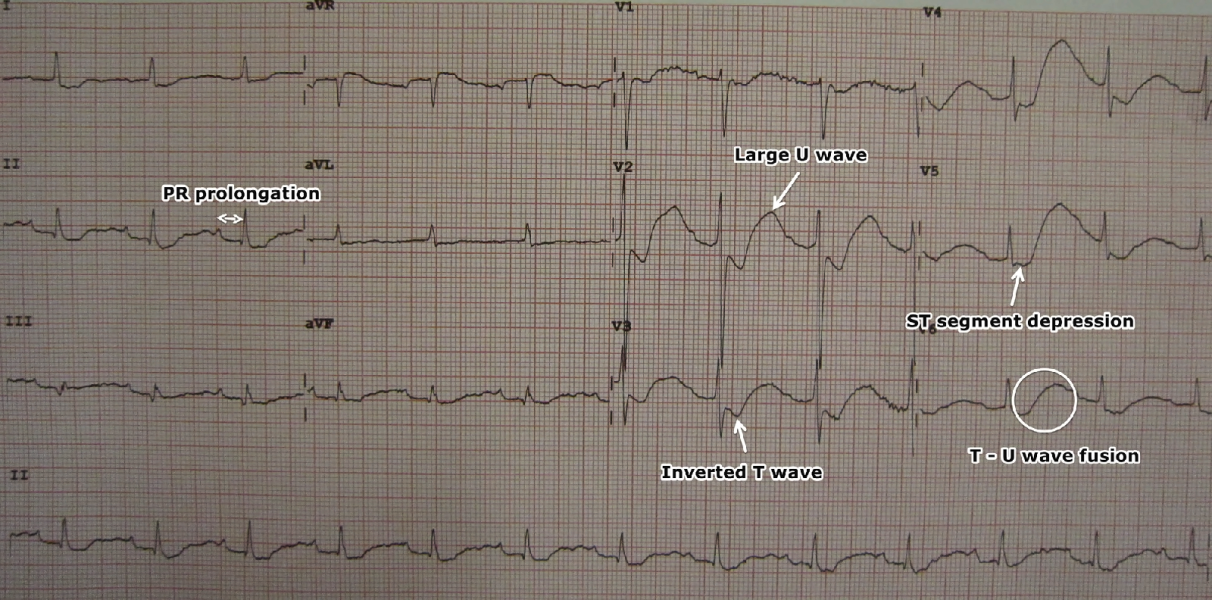| The major causes of thyroid nodule development include, [[Multinodular goiter|multinodular (sporadic) goiter]], [[Hashimoto's thyroiditis]], [[cysts]], macrofollicular/microfollicular adenomas, childhood [[radioiodine]] exposure, [[familial history]], and [[gene]] [[mutations]] include N&H [[Ras oncogene|ras]], [[RET gene|RET]], Gsp, [[C-MET]] (α and β subunit), [[TRK]], EGF / [[EGFR|EGF-R]], and [[P53]] [[mutation]]. [[Neck masses]] can be mistaken for thyroid nodules. The most important [[neck masses]] that can be mistaken with thyroid nodules include, [[Thyroglossal cyst|thyroglossal]] duct cyst, [[parathyroid cancer]], [[Parathyroid gland|parathyroid]] cyst, and [[branchial cleft cyst]]. While the diagnosis of a thyroid nodule is established, thyroid nodule should be differentiated based on benign or [[malignant]] features and the type of nodule. Common [[risk factors]] associated with thyroid nodules include, older age, [[iodine deficiency]], previous history of [[iodine deficiency]] and [[hypothyroidism]], living in iodine deficient areas, family history of [[Autoimmune disease|autoimmune diseases,]] multiparity, and smoking. A solitary thyroid nodule may become [[symptomatic]] if it grows rapidly due to [[hemorrhage]] or [[malignancies]], invades [[Laryngeal nerve|laryngeal nerves]], compressing nearby structures, and secretory nodules that produce [[TSH]]. Thyroid nodules may be a manifestation of [[thyroid cancer]], that usually develops in the 6th decade of life, and start with [[symptoms]] such as [[weight loss]], [[fatigue]], and [[hoarseness]]. Without treatment, the patient with [[benign]]<nowiki/>nodules may remain [[asymptomatic]], while the patients with [[thyroid]] [[neoplasm]] may develop distant [[metastasis]], which may eventually lead to death. The most common complications of thyroid nodules are [[hoarseness]], [[Horner's syndrome|horner syndrome]], nodule rupture, needle track seeding, [[hemorrhage]]/[[hematoma]], [[dysphagia]], [[upper airway obstruction]], [[pain]], [[skin]] burn, [[Vasovagal Syncope|vasovagal reaction]], [[hypothyroidism]], transient [[thyrotoxicosis]], [[anaphylactic reaction]], [[thromboembolism]], and [[pneumothorax]]. Physical examination should focus on the [[thyroid gland]] and the lateral and central [[neck]] and should assess for [[supraclavicular]] and [[submandibular]] [[adenopathy]]. In case of active hot thyroid nodules that produce [[thyroid hormones]], [[Antithyroid agent|antithyroid drugs]] should be administered, that include [[beta-blockers]], antithyroid drugs ([[methimazole]],[[carbimazole]],[[propylthiouracil]]), [[Iodine-131|radioactive iodine]], and [[thyroidectomy]]. If the nodule excision treatment ([[lobectomy]], [[isthmectomy]], and total [[thyroidectomy]]) is not curative, then treatment with postoperative [[radioactive iodine]] ([[RAI1|RAI]]) remnant ablation and recombinant human TSH–mediated therapy is recommended. Surgical management of thyroid nodule is performed in case of non-diagnostic or suspicious biopsy, for removal of primary [[thyroid cancer]] or for [[thyroid cancer]] staging for [[radioactive]] ablation and [[serum]] [[thyroglobulin]] monitoring. [[Primary prevention]] of thyroid nodule is aimed at prevention of [[thyroid cancer]]. Avoidance of exposure to [[radiation]] and monitoring the population with an increased risk of development of a [[malignant]] thyroid nodule play major roles in [[primary prevention]]. [[Secondary prevention]] of thyroid nodules focuses on [[Prevention (medical)|prevention]] of recurrence of nodules. Different prevention strategies may be used depending upon whether the nodule is [[benign]] or [[malignant]]. In case of a malignant nodule, the major focus is on the [[Prevention (medical)|prevention]] of recurrence after removal of a primary nodule. Post-operative periodic monitoring with [[serum]] [[thyroglobulin]] levels, [[Radioactive iodine uptake|radioactive iodine scanning]], [[neck]] [[ultrasound]] and [[Thyroid-stimulating hormone|thyroid stimulating hormone]] ([[TSH]]) may decrease the chances of recurrence.
| | [[image:LowKECG.png|thumb|700px|right|An ECG in a person with a potassium level of 1.1 showing the classical ECG changes of ST segment depression, inverted T waves, large U waves, and a slightly prolonged PR interval. By James Heilman, MD - Own work, CC BY-SA 3.0]] |
